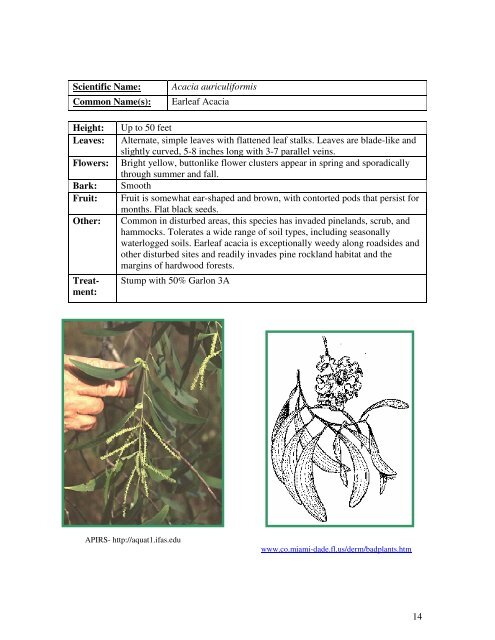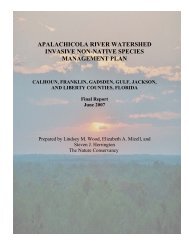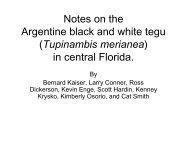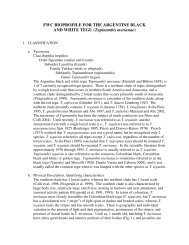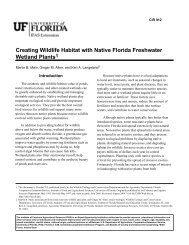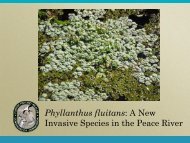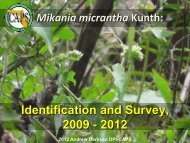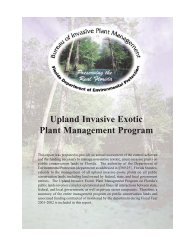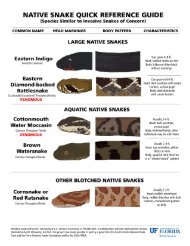Identification Guide For Invasive Exotic Plants of the Florida Keys
Identification Guide For Invasive Exotic Plants of the Florida Keys
Identification Guide For Invasive Exotic Plants of the Florida Keys
You also want an ePaper? Increase the reach of your titles
YUMPU automatically turns print PDFs into web optimized ePapers that Google loves.
Scientific Name:<br />
Common Name(s):<br />
Acacia auriculiformis<br />
Earleaf Acacia<br />
Height:<br />
Leaves:<br />
Flowers:<br />
Bark:<br />
Fruit:<br />
O<strong>the</strong>r:<br />
Treatment:<br />
Up to 50 feet<br />
Alternate, simple leaves with flattened leaf stalks. Leaves are blade-like and<br />
slightly curved, 5-8 inches long with 3-7 parallel veins.<br />
Bright yellow, buttonlike flower clusters appear in spring and sporadically<br />
through summer and fall.<br />
Smooth<br />
Fruit is somewhat ear-shaped and brown, with contorted pods that persist for<br />
months. Flat black seeds.<br />
Common in disturbed areas, this species has invaded pinelands, scrub, and<br />
hammocks. Tolerates a wide range <strong>of</strong> soil types, including seasonally<br />
waterlogged soils. Earleaf acacia is exceptionally weedy along roadsides and<br />
o<strong>the</strong>r disturbed sites and readily invades pine rockland habitat and <strong>the</strong><br />
margins <strong>of</strong> hardwood forests.<br />
Stump with 50% Garlon 3A<br />
APIRS- http://aquat1.ifas.edu<br />
www.co.miami-dade.fl.us/derm/badplants.htm<br />
14


